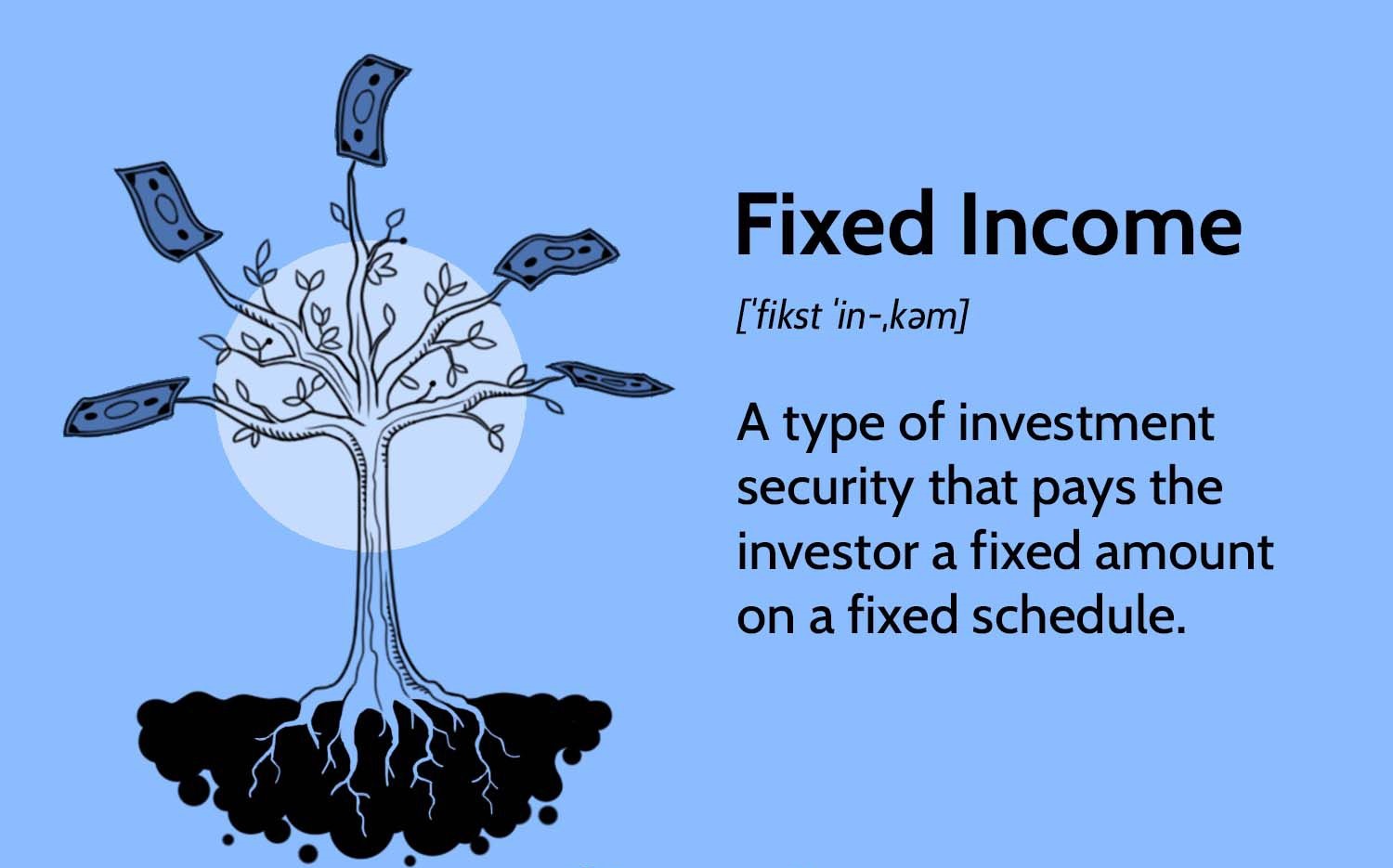Introduction
As the economy continues to progress and adapt, one of the key factors that investors keep a close eye on is interest rates. Interest rates play a crucial role in determining the profitability and performance of various investment vehicles, including bonds, stocks, real estate, and commodities. Understanding the impact of rising interest rates is essential for investors to make informed decisions and protect their investments.
Interest rates refer to the cost of borrowing money. When interest rates rise, it becomes more expensive for individuals and businesses to borrow funds. This increase in borrowing costs has far-reaching implications for the financial markets and can have significant consequences for different asset classes.
In this article, we will explore the effects of rising interest rates on various investment options, such as bonds, stocks, real estate, and commodities. We will also discuss strategies that investors can employ to safeguard their investments in the face of increasing interest rates.
It’s important to note that while rising interest rates can present challenges, they also offer opportunities for savvy investors. By staying informed and understanding how different assets are affected, investors can adapt their portfolios and potentially capitalize on these changes.
So, whether you’re a seasoned investor or just getting started, buckle up as we delve into the world of rising interest rates and its impact on investments. Let’s explore the various investment vehicles and discover how they fare when interest rates start to climb.
Understanding Interest Rates
Before diving into the effects of rising interest rates on investments, it’s essential to have a clear understanding of what interest rates are and how they are determined. Interest rates are the cost of borrowing money or the return earned on lending or investing funds.
Central banks, such as the Federal Reserve in the United States, play a pivotal role in setting and controlling interest rates. These rates influence the overall cost of borrowing for both individuals and businesses and have a significant impact on the economy as a whole.
Interest rates can be divided into two main types: nominal interest rates and real interest rates. Nominal interest rates are the rates quoted by banks and financial institutions, whereas real interest rates take into account inflation. It’s important to understand the distinction between these two types of interest rates as they can affect investment decisions differently.
When interest rates rise, borrowing becomes more expensive. This increase in the cost of borrowing can have a cascading effect on consumer spending, business investments, and overall economic growth. Higher interest rates can also encourage saving, as individuals and businesses may find it more appealing to earn interest on their funds rather than spend or invest them.
Furthermore, interest rates can signal the health and direction of the economy. Central banks often raise interest rates to combat inflation, stimulate savings, and cool down an overheating economy. Conversely, during times of economic downturn, central banks may lower interest rates to promote borrowing and spending and boost economic activity.
As an investor, it is crucial to stay informed about current interest rates and any potential changes or trends. Monitoring interest rates can provide valuable insights into the state of the economy and help guide investment decisions.
In the next sections, we will examine how rising interest rates impact different investment options, including bonds, stocks, real estate, and commodities, to help you navigate the shifting landscape of the investment market.
Basic Principles of Investing
Before delving into the specific effects of rising interest rates on investments, it’s important to grasp the basic principles of investing. These principles serve as a foundation for smart and successful investment strategies. Whether you’re a seasoned investor or just starting out, understanding these principles is essential for navigating the complex world of investing.
1. Diversification: Diversification refers to spreading your investments across different asset classes, industries, and geographic locations. By diversifying your portfolio, you can mitigate risk and protect yourself from the volatility of individual investments. This means that if one asset class or sector is negatively impacted by rising interest rates, other asset classes may offset those losses.
2. Risk vs. Reward: Investing involves a trade-off between risk and reward. Generally, investments with higher potential returns come with greater risks. It’s important to assess your risk tolerance and investment goals to strike the right balance between risk and reward. This will help you align your investments with your financial objectives and time horizon.
3. Long-term Perspective: Investing should be approached with a long-term perspective. Trying to time the market or making quick decisions based on short-term fluctuations can often lead to poor investment outcomes. Instead, focus on long-term trends and invest for the future with patience and discipline.
4. Regular Monitoring: Even though a long-term perspective is vital, it’s important to regularly monitor your investments. Stay updated on market trends, economic indicators, and any relevant news that may impact your investments. This allows you to make informed decisions, adjust your portfolio when necessary, and take advantage of potential opportunities.
5. Professional Advice: Seeking professional advice from financial advisors or investment experts can provide valuable insights and guidance. They can help you navigate complex investment strategies, understand the impacts of changing interest rates, and adapt your portfolio to meet your investment goals.
By adhering to these basic principles, you can build a solid foundation for your investment journey. Now, let’s explore how rising interest rates affect specific investment options, starting with bonds.
Effects of Rising Interest Rates on Bonds
Bonds are often considered relatively safer investments compared to stocks, making them a popular choice for risk-averse investors. However, rising interest rates can have a significant impact on the performance of bonds. Let’s examine the effects of increasing interest rates on bonds.
When interest rates rise, existing bonds with lower interest rates become less attractive to investors. This is because newly issued bonds will offer higher interest rates, resulting in a decrease in demand for existing lower-yielding bonds. Consequently, the value of existing bonds in the secondary market decreases.
Another significant factor to consider is the inverse relationship between interest rates and bond prices. As interest rates rise, bond prices tend to fall. This is because the fixed interest payments offered by existing bonds become less attractive when compared to new bonds offering higher interest rates. As a result, investors may sell their existing bonds, putting downward pressure on bond prices.
It’s important to note that the magnitude of the impact of rising interest rates on bond prices varies depending on the maturity of the bond. Longer-term bonds are more sensitive to interest rate changes compared to shorter-term bonds. This is because long-term bonds have a longer duration, meaning they have a longer time period over which their fixed interest payments are affected by changing interest rates.
However, the impact of rising interest rates on bond values is not uniform across all types of bonds. For example, government bonds, particularly those issued by stable economies, tend to be less affected by interest rate changes. This is because investors view government bonds as a safe-haven investment during periods of economic uncertainty, which helps to stabilize their prices.
On the other hand, corporate bonds, especially those with lower credit ratings, are more vulnerable to rising interest rates. As interest rates increase, the cost of borrowing for corporations rises, leading to a higher risk of default. This increased risk can result in a decrease in the value of corporate bonds.
To mitigate the impact of rising interest rates on bond investments, investors can take certain measures. One approach is to consider investing in bonds with shorter maturities. Short-term bonds tend to be less affected by interest rate changes, offering more stability in an environment of rising interest rates.
Furthermore, diversifying bond investments across different issuers, sectors, and geographies can help to minimize the impact of rising interest rates on a portfolio. This diversified approach helps to spread risk and reduce the potential negative impact of interest rate changes on any one bond investment.
Overall, while rising interest rates can present challenges for bond investors, understanding the relationship between interest rates and bond prices can help investors navigate the changing market dynamics and make informed decisions.
Effects of Rising Interest Rates on Stocks
Rising interest rates can have a significant impact on the stock market, affecting the performance and valuation of stocks. Let’s explore the effects of increasing interest rates on stocks.
When interest rates rise, borrowing costs for businesses increase. This can lead to higher production costs, reduced borrowing for expansion and investment, and lower corporate profitability. As a result, investors might view stocks as less attractive compared to other investment options, causing a decrease in demand for stocks.
Additionally, rising interest rates can also affect consumer spending and borrowing. Higher interest rates can discourage individuals from making large purchases on credit, which can impact consumer discretionary stocks. Reduced consumer spending can translate into lower revenues and earnings for companies in retail, hospitality, and other consumer-focused sectors, resulting in potential declines in stock prices.
Certain sectors of the stock market are more sensitive to changes in interest rates. For example, interest rate-sensitive sectors such as utilities and real estate investment trusts (REITs) often experience downward pressure when interest rates rise. This is because these sectors are known for their relatively high dividend yields, making them less attractive in comparison to fixed-income investments when bond yields rise.
On the other hand, rising interest rates can benefit other sectors, such as financial institutions. Banks and financial companies tend to profit from higher interest rates, as they can charge more on loans while offering higher interest rates on customer deposits. Consequently, the profitability of banking stocks can improve as interest rates rise, potentially leading to higher stock prices.
Another aspect to consider is the impact of rising interest rates on growth-oriented companies. These companies often rely on borrowing to invest in research and development, expand their operations, or acquire other companies. When borrowing costs increase due to rising interest rates, these growth-oriented companies may face challenges in accessing capital, which can weigh on their stock prices.
To navigate the impact of rising interest rates on stocks, investors can adopt several strategies. Firstly, it’s important to analyze the underlying fundamentals and financial health of the companies in their portfolio. Companies with strong balance sheets, stable cash flows, and competitive advantages may be better positioned to weather the impact of rising interest rates.
Additionally, diversifying stock investments across different sectors and geographic regions can help mitigate the impact of rising interest rates on a portfolio. Diversification spreads risk and can help offset potential losses in one sector with gains in another.
Lastly, investors should adopt a long-term perspective when investing in stocks. While rising interest rates may lead to short-term volatility, the stock market has historically shown resilience and the ability to recover over the long run. Staying focused on long-term investment goals and avoiding knee-jerk reactions to short-term market swings can help investors navigate the impact of rising interest rates on stocks.
Effects of Rising Interest Rates on Real Estate
Rising interest rates can have significant implications for the real estate market, affecting both residential and commercial properties. Let’s explore the effects of increasing interest rates on real estate investments.
One of the key impacts of rising interest rates on the real estate market is the cost of borrowing. Higher interest rates translate to increased mortgage payments for homebuyers and higher financing costs for real estate developers and investors. This can lead to a decrease in demand for properties as affordability decreases.
In the residential real estate market, rising interest rates can slow down home sales and potentially lower property prices. As mortgage rates rise, potential homebuyers may face difficulties qualifying for loans or may be less willing to take on higher mortgage payments. This decrease in demand can put downward pressure on prices, especially in markets that were already at risk of overvaluation or experiencing high levels of debt.
Similarly, rising interest rates can impact the commercial real estate market. Higher borrowing costs can result in reduced demand for commercial properties, such as office buildings, retail spaces, and warehouses. Businesses may be more cautious about expanding or leasing additional space due to higher rental costs, impacting the demand and profitability of commercial properties.
Another aspect to consider is the impact of rising interest rates on real estate investment trusts (REITs). REITs are popular investment vehicles that allow individuals to invest in a diversified portfolio of income-producing properties. As interest rates rise, the higher yields offered by bonds and other fixed-income investments can make REITs less attractive to investors seeking income. This can potentially lead to a decrease in demand for REITs, resulting in lower prices.
However, it is important to note that the impact of rising interest rates on the real estate market is not uniform across all regions and property types. Strong economic growth and favorable supply-demand dynamics can offset some of the negative effects of rising rates. Additionally, real estate markets with limited supply and high demand may continue to see price appreciation, even in the face of rising interest rates.
To mitigate the impact of rising interest rates on real estate investments, investors can consider a few strategies. Firstly, it may be wise to focus on properties with stable cash flows, such as rental properties with long-term leases or properties in strong rental markets. These properties can provide a steady income stream that can help offset the potential challenges of rising interest rates.
Furthermore, investors can explore alternative financing options, such as adjustable-rate mortgages or creative financing structures, to minimize the impact of rising interest rates on their real estate investments. Working closely with lenders and financial advisors can provide valuable insights and options for managing borrowing costs in a rising rate environment.
Lastly, maintaining a diversified real estate portfolio that includes a mix of property types, geographic locations, and investment strategies can help spread risk and minimize the impact of rising interest rates on overall returns. This diversification strategy can help protect against specific market vulnerabilities and take advantage of opportunities that may arise in different real estate sectors.
Effects of Rising Interest Rates on Commodities
Rising interest rates can have significant implications for the commodities market, impacting the prices and demand for various raw materials and resources. Let’s explore the effects of increasing interest rates on commodities.
When interest rates rise, the cost of borrowing increases for businesses. This can lead to reduced production, slower economic growth, and dampened demand for commodities. Industries such as construction, manufacturing, and infrastructure development, which are significant consumers of commodities, may experience a slowdown in activity, resulting in decreased demand for raw materials.
Additionally, rising interest rates can affect currency exchange rates and contribute to a stronger domestic currency. A stronger currency can negatively impact commodity prices, as it makes commodities more expensive for foreign buyers. This can potentially reduce international demand for commodities, leading to price declines.
It’s important to note that the impact of rising interest rates on different commodities can vary. For example, precious metals like gold and silver are often seen as safe-haven assets during times of economic uncertainty, which can offset some of the negative effects of rising interest rates. These metals are often regarded as a store of value and can attract investors seeking to hedge against inflation and currency fluctuations.
On the other hand, commodities that are more closely tied to industrial demand, such as base metals like copper and aluminium, may be more affected by rising interest rates. Slower economic growth and reduced business activity resulting from higher borrowing costs can lead to lower demand for these commodities, potentially causing a decline in their prices.
Agricultural commodities are also influenced by rising interest rates. Higher borrowing costs can impact farmers’ ability to invest in their operations, which may result in reduced production or changes in agricultural practices. Moreover, currency fluctuations as a result of rising interest rates can affect the cost of importing and exporting agricultural goods, impacting their prices.
To navigate the impact of rising interest rates on commodities, investors can consider several strategies. Firstly, it can be beneficial to analyze the underlying supply-demand dynamics for specific commodities. Understanding factors such as global economic growth, geopolitical stability, and industry-specific trends can provide insights into the potential effects of rising interest rates on commodity prices.
Secondly, diversifying commodity investments across different types of commodities can help mitigate risk. Commodities often exhibit different price movements and are influenced by various factors, so diversification can help balance out potential losses in one commodity with gains in another.
Lastly, keeping a close eye on market trends and staying informed about economic indicators and global events can help investors anticipate and react to potential shifts in commodity prices. Monitoring key factors such as global supply and demand, weather patterns, and government policies can provide insights into the future direction of commodity prices amid rising interest rates.
Strategies to Protect Your Investments
As interest rates rise, it’s important for investors to implement strategies to protect their investments and navigate the changing market dynamics. Here are some strategies to consider:
1. Diversify Your Portfolio: One of the most effective ways to mitigate the impact of rising interest rates is to diversify your investment portfolio. By spreading your investments across different asset classes, sectors, and geographic regions, you can reduce the risk associated with any single investment. This diversification can help cushion the impact of rising rates on specific investments.
2. Focus on Quality: In an environment of rising interest rates, it’s crucial to focus on investments with strong fundamentals and solid financial health. Look for companies with a track record of stable earnings, manageable debt levels, and competitive advantages. Investing in high-quality assets can provide stability and resilience during times of economic uncertainty.
3. Consider Defensive Sectors: Certain sectors, such as utilities, consumer staples, and healthcare, are considered defensive sectors. These sectors tend to be less sensitive to changes in interest rates and can provide more stable returns during economic downturns. Including defensive stocks in your portfolio can help mitigate the impact of rising rates on your overall investment performance.
4. Monitor Interest Rate Trends: Stay informed about interest rate trends and changes in monetary policy. Understanding the direction of interest rates can help you anticipate potential impacts on specific investments. Stay updated on central bank announcements, economic indicators, and expert commentary to make informed decisions.
5. Evaluate Fixed-Income Investments: In an environment of rising interest rates, fixed-income investments can be particularly vulnerable. Consider reviewing your bond holdings and evaluating the maturity dates and interest rate sensitivity of your bonds. Consider diversifying into shorter-term bonds or bond funds that can potentially offer more stability amid rising rates.
6. Invest in Inflation-Protected Assets: Rising interest rates often coincide with inflationary pressures. Consider investing in assets that are designed to protect against inflation, such as Treasury Inflation-Protected Securities (TIPS) or commodities. These investments can provide a hedge against inflation and potentially maintain purchasing power.
7. Review Your Real Estate Investments: Rising interest rates can impact the real estate market. Evaluate your exposure to real estate and assess the potential effects of rising rates on your investments. Consider diversifying your real estate holdings across different property types and geographic locations to mitigate risk.
8. Regularly Rebalance Your Portfolio: Periodically review and rebalance your investment portfolio to maintain your desired asset allocation. As interest rates change, some investments may outperform or underperform. Rebalancing allows you to reallocate your investments to maintain your desired risk level and take advantage of potential opportunities.
9. Seek Professional Advice: Consider working with a financial advisor or investment professional to guide you through the challenging market conditions associated with rising interest rates. They can provide personalized guidance, help you assess your risk tolerance, and recommend investment strategies aligned with your financial goals.
10. Stay Focused on the Long Term: Finally, remember to stay focused on your long-term investment goals. Market fluctuations and rising interest rates can be unnerving, but making knee-jerk reactions based on short-term movements can harm your investment performance. Stick to your investment plan and take a long-term perspective to achieve your financial objectives.
By implementing these strategies, investors can better protect their investments in a rising interest rate environment and position themselves for long-term success. Stay vigilant, stay informed, and adapt your investment strategy as needed to navigate the changing market conditions.
Conclusion
Rising interest rates have a significant impact on various investment options, including bonds, stocks, real estate, and commodities. It’s crucial for investors to understand the effects of rising interest rates and implement strategies to protect their investments in this changing market environment.
When interest rates rise, bonds generally experience a decrease in value, while stocks can be influenced by changes in borrowing costs and consumer spending. Real estate investments may face challenges with reduced demand and higher borrowing costs, while commodities can be affected by shifts in industrial demand and currency fluctuations.
To safeguard investments, diversification and focusing on quality assets are essential strategies. Including defensive sectors, monitoring interest rate trends, and evaluating fixed-income investments can help navigate the impact of rising rates. Additionally, investing in inflation-protected assets, reviewing real estate holdings, and regular portfolio rebalancing are effective measures.
It’s important to stay informed, seek professional advice, and maintain a long-term perspective when managing investments in the face of rising interest rates. Market conditions may fluctuate, but by adhering to fundamental principles and adapting strategies as needed, investors can protect their wealth and position themselves for long-term success.
Remember, every investment strategy comes with its own set of risks, and past performance is not indicative of future results. Therefore, it is essential to conduct thorough research and analysis before making any investment decisions. By staying knowledgeable and proactive, investors can navigate the challenges and opportunities presented by rising interest rates and achieve their financial goals.

























